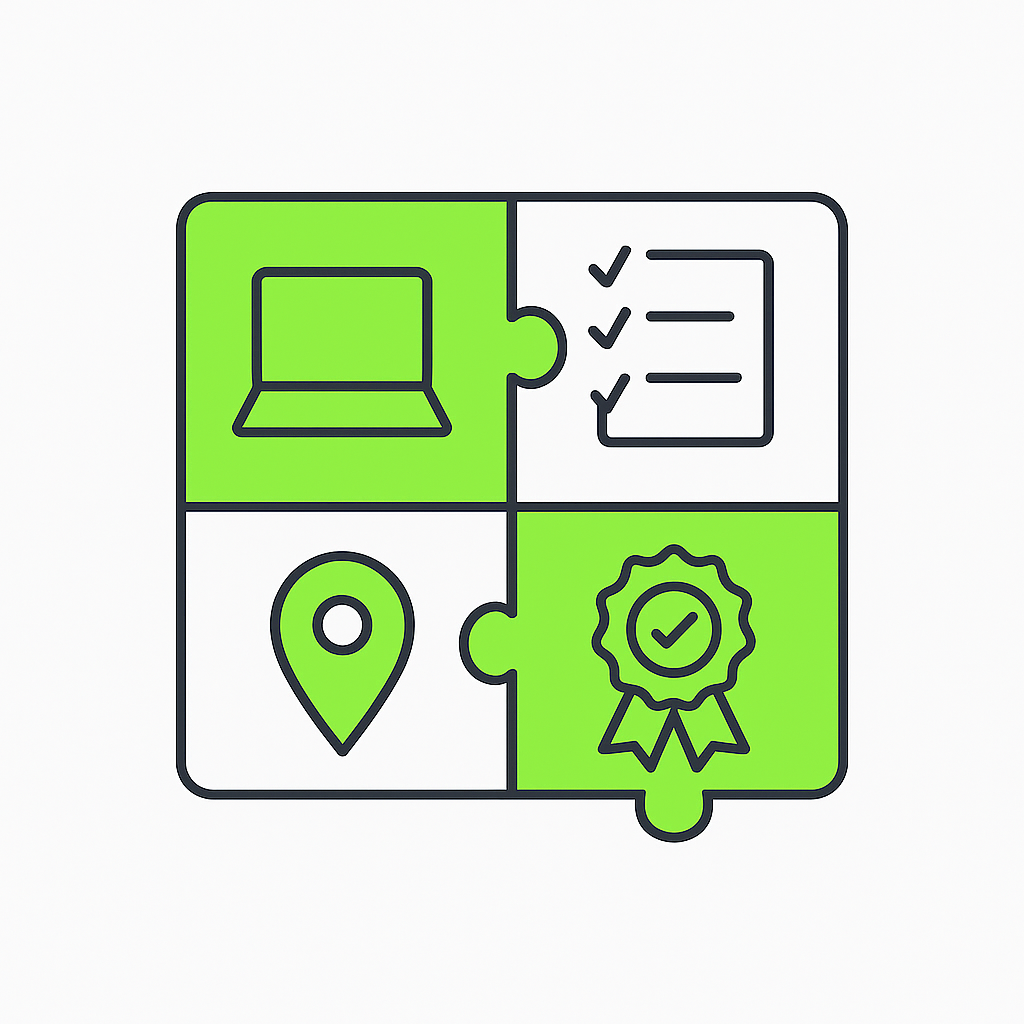Digital Innovation for Green Communication: Inside the GreenComm Online Platform

Overview
The GreenComm online platform is the public, open-access home for the project’s full learning offer: the Green Communication (VET) Training Programme, the practical GreenComm Toolkit, a Certification Quiz, a Best Practices hub, and a growing Organizations & Stakeholders Map. Designed to be used directly by youth workers and their organisations, it brings training, ready-to-use templates, and community discovery into a single, multilingual space.
All core materials are available in four languages: English, Dutch, Turkish and Portuguese. So partners and peers can learn and collaborate across borders without friction. Below, we walk through each component of the platform and show how practitioners in the Netherlands, Türkiye, Estonia and Portugal can use it to plan, deliver and evaluate effective green communication.
VET Training Programme: Seven modules in 4 languages
At the heart of the platform is the GreenComm VET Training Programme: a flexible, practice-based course built around seven concise modules created with and for youth workers. Each module focuses on a real need from the field and can be used standalone or as part of a complete pathway (about 35 hours in total). Crucially, the content is written in plain language and structured for hands-on use, so trainers can lift materials straight into workshops.
The seven modules cover:
(1) understanding and communicating with young people
(2) understanding media and journalism
(3) principles for effective messaging and content
(4) storytelling
(5) delivering content via social media
(6) making content viral
(7) engaging with popular culture and digital visibility
Because each topic maps to a frequent task in youth work, from planning a session to producing a short video, the programme acts like an ‘activation manual’ rather than a textbook.
The full programme is presented on the site in all four languages, and no login is required to access it.
GreenComm Toolkit: From learning to Action
The GreenComm Toolkit sits alongside the training as a practical companion. It translates the learning outcomes of the modules into ready-to-use tools, templates and prompts that speed up production. The Toolkit mirrors the same seven themes, helping teams move from knowledge to action with minimal overhead. For example, a youth worker designing a local ‘myth vs. fact’ activity can combine the media literacy module with a checklist template; a team planning a month-long social campaign can start from the messaging and storytelling templates, then slot assets into a simple content calendar.
All toolkit content are also available in English, Dutch, Turkish and Portuguese so partners can adapt language and tone to their communities.
Certification Quiz: Validate Skills, Motivate Learners
In order to recognize learning and motivate practice, the platform includes a Certification Quiz. The quiz contains fifteen questions based on the VET Programme; participants who answer at least twelve correctly receive a certificate by email—typically within twenty-four hours. The quiz lets practitioners validate their understanding and gives organisations a light-touch way to evidence staff development. Because the quiz sits inside the same open platform, participants can read a module, take the quiz, and return to topics for revision without navigating external systems.
Best Practices hub: inspiration you can reuse
GreenComm’s Best Practices section curates campaigns, initiatives and media resources that model effective green communication. Entries range from youth-led storytelling projects and image libraries for climate visuals to investigative journalism labs and global movements that mobilise communities through creative media. For youth workers, this page works like a living idea bank. Practitioners can also submit additional practices for inclusion, ensuring the collection keeps pace with new tools and tactics.
Organizations & Stakeholders Map: discover partners and allies
The Organizations & Stakeholders Map lists dozens of actors active in green communication and media literacy across Europe—from national NGOs and youth networks to creative studios and climate journalism platforms. Each entry includes a short profile and a link, making it easy to discover allies, speakers and resources for events or co-productions. A submission form allows new organisations to be added over time, turning the map into a constantly refreshed directory for partnerships and peer learning.
Why it matters: benefits for youth work and NGOs
For organisations, the platform reduces both the cost and time-to-launch of quality communication. Benefits include:
• Open, no-login access: instant use in workshops and classrooms.
• Multilingual delivery: English, Dutch, Turkish, Portuguese. Ssupporting cross-border collaboration and inclusion.
• Cohesive structure: modules + toolkit + quiz + directories in one place, so teams can plan, produce and evidence learning.
• Continuous improvement: best practices and the map create discovery loops for new partners, ideas and resources.
Quick-start guide: from module to campaign
A simple way to activate the platform in your programme:
1) Choose a priority theme (e.g., waste, mobility, biodiversity) and audience.
2) Read the relevant module—start with ‘effective messaging’ and ‘storytelling’.
3) Grab Toolkit templates (message map, myth-vs-fact, content calendar) and draft assets.
4) Run a pilot with a small youth group; collect quick feedback.
5) Publish and measure: track reach, comments, sign-ups or pledges.
6) Ask participants to take the Certification Quiz and add results to your training records.
7) Share your process as a Best Practice and list your NGO on the Organizations Map to grow your network.
Built to last: keeping knowledge in public view
Post-project, the GreenComm platform is designed to remain online as a public resource. That decision matters: many EU outputs disappear after funding cycles, but communication skills gain value the more they are reused. Keeping an open, multilingual hub available ensures youth workers can revisit modules, download Toolkit assets, complete certification, and discover peers—long after the initial grant period. In that sense, the platform functions not just as a repository, but as a durable public utility for green communication in youth work.
PROJECT RESULTS
Within the framework of the GreenComm project, three main outputs have been developed to strengthen the communication and media literacy skills of youth workers engaged in environmental and climate-related work.
